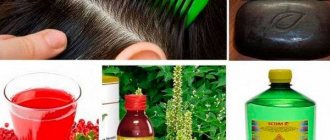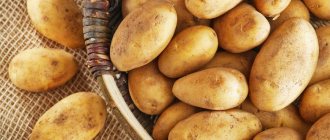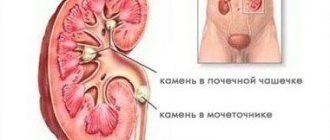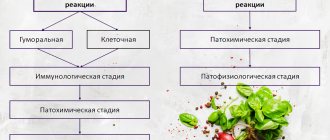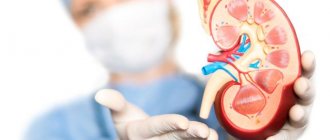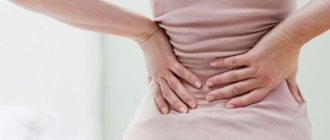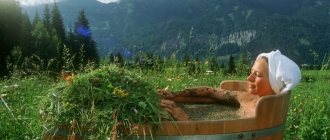There is no such disease as sand in the kidneys or bladder in the International Register of Diseases. It refers to the pathological formation of calculi, stone-like formations that impede the passage of urine from the kidneys or bladder.
Cost of urologist services in our clinic
| Initial consultation with a doctor with the highest category | 1000 rub. |
| Consultative appointment with a doctor based on test results and ultrasound results | 500 rub. |
| Ultrasound of the kidneys in standard mode and using Doppler techniques | 1200 rub. |
| Ultrasound of the bladder | 500 rub. |
| Ultrasound of the pelvis using Doppler techniques | 1200 rub. |
| Make an appointment by phone: 8-800-707-15-60 (toll-free) | |
| *The clinic is licensed to remove tumors |
In fact, stone is a later stage of stone formation, which is preceded by so-called sand. However, the sand has not yet completely hardened, so it is easier to remove from the body. But in terms of their composition, these are the same elements, only they differ in size and shape.
What is sand
The content of the article
Both sand and stones are a mixture of various salts with proteins, but sand is a mixture that has not yet acquired a rocky structure. The sand particles have a diameter of no more than 8-9 mm, and the largest stone discovered was 17 cm wide.
Sand is more often found in the bladder, and stones in the kidneys. From there, small particles of stones descend down the urinary tract and enter the bladder.
At the initial stage, neither stones nor sand show themselves in any way, so a person may not be aware of the problem. Treatment in the initial stages is quite quick and effective, while large stones can sometimes only be removed surgically. For this reason, you should definitely visit a urologist once a year and undergo an ultrasound examination of the urinary system.
Factors contributing to stone formation
1. Consumption of foods rich in stone-forming substances
2. Diseases and conditions associated with stone formation
- Hyperparathyroidism
- Renal tubular acidosis
- Jejunoileal anastomosis
- Crohn's disease
- Condition after ileal resection
- Malabsorption syndrome
- Sarcoidosis
- Hyperthyroidism
3. Family history of urolithiasis
4. Drugs associated with stone formation
5. Anomalies in the structure of the urinary system associated with stone formation
- Tubular ectasia
- LMS stricture
- Diverticulum/calyx cyst
- Ureteral stricture
- Horseshoe kidney
- Urinary tract infections
What are stones
Stones are concretions, i.e. stones formed as a result of metabolic disorders in the body. Depending on the reasons for their formation, they are divided into groups:
Alkaline stones . They were formed as a result of the creation of an alkaline environment in the body. This is directly related to the diet, the products of which create this or that environment. The optimal pH level is 6.5-7.4, and any decrease or increase creates an environment favorable for the formation of stones.
When food is processed and broken down, uric and lactic acid are formed. They are neutralized by reaction with lymph and bile, which have an alkaline environment. When there is an excess of foods that also give an alkaline reaction, the body experiences a lack of acid.
As a result, phosphoric acid salts are deposited in the kidneys or bladder, which, when interacting with proteins, crystallize and turn into stones.
Phosphates. These are stones formed when there is an excess of phosphoric acid. Seemingly healthy and harmless foods such as vegetables and fruits give an alkaline reaction. The “champions” for alkalizing the body are citrus fruits, in particular lemon.
During the off-season, people try to strengthen their immune system and prevent the spread of infection by eating lemons, oranges, apples, onions and garlic. Strict adherence to fasting or a new-fangled diet is also fraught with the onset of stone formation. Phosphate stones grow quickly and provoke the development of inflammatory diseases of the genitourinary system. Ultrasound shows smooth stones with a clear contour and low echo structure.
Acid stones. The consumption of certain foods leads to acidosis - a shift in pH to an acidic environment. Oxidation corrodes body tissue, promotes the accumulation of water in cells, causes premature aging and the development of cancer. Also, the acidic environment provokes the leaching of calcium from the bones, which becomes the cause of osteoporosis with age.
Products that create an acidic environment in the body include sugar and everything connected with it (sweets, pastries, cakes, chocolates), flour products (pasta, rolls, pies, loaves), except black bread made from rye flour, meat and dairy products (sausages, yoghurts, milk, sausages, cottage cheese), alcohol, sweet carbonated drinks, fast food. In addition, the acidic environment is favorable for the proliferation of pathogenic bacteria that feed on glucose. Along with the formation of stones in the kidneys or bladder, inflammatory processes occur caused by the activity of microorganisms.
Oxalates. These are salts of oxalic acid, secreted by the kidneys independently during biochemical reactions, as well as with the consumption of certain foods. The formation of oxalates is stimulated by sorrel, rhubarb, asparagus, spinach - almost all greens.
This does not mean that they need to be excluded from the diet, but long-term “herbal” diets should be avoided and be sure to compensate with alkaline foods. In hot climates, the formation of oxalates is significantly accelerated.
Also provocateurs are poor-quality drinking water, excessive intake of vitamin D and excess meat and products made from it. Oxalates are clearly visible on ultrasound because they are quite large, but not dense, and therefore do not have an increased echo structure. They are removed from the body in a difficult and time-consuming manner, and when carried forward they cause renal colic.
Urats . This is a combination of uric acid crystals and proteins. They are formed during metabolism and are always present in small quantities without causing harm to health. They are mainly found in the bladder because urates are formed when there is an excess concentration of uric acid in the urine.
Unlike phosphates or oxalates, urates are not affected by diet. They most often form in people who consume insufficient amounts of fluid (the norm is 2 liters in the summer and 1.5-2 liters during the rest of the period).
When there is a lack of water, uric acid salts settle on the walls of the bladder in the form of a sediment of dense texture. The formation of urates can be triggered by taking analgesics, a sedentary lifestyle, lack of vitamin B, and excess food of animal origin. On ultrasound, urates are visualized as round formations of increased echostructure ranging in size from 1-2 mm.
Struvite-carbonate and phosphate-ammonium-magnesium stones. They are formed on the basis of crystals of magnesium ammonium phosphate or carboapatite. Unlike other types of stones, struvite has the appearance of coral-shaped growths.
They are provoked by pathogenic bacteria that break down uric acid and produce urease, an enzyme that breaks down uric acid into ammonia and carbon dioxide. A prerequisite for stone formation is the presence of pathogenic microflora.
Inside each calculus there is a dead bacterium surrounded by a crystal. On ultrasound they appear as coral-shaped formations with a soft echostructure. In 50% of cases, damage to the kidney of this type of stones leads to loss of the organ.
Stones formed as a result of genetic disorders and congenital defects. Stones are formed regardless of diet and lifestyle, but only due to metabolic disorders in the kidneys.
Cystine stones . They are the result of the development of cystinuria, an autosomal recessive pathology consisting in impaired reabsorption of the amino acids arginine, ornithine and cysteine.
They are not absorbed by the small intestine and remain in the urine. Cystine is practically insoluble in water, therefore it forms crystals, which, when interacting with acids, turn into stones.
On ultrasound they are smooth, round, not layered. People suffering from cystinuria have a high probability of inheriting the disease.
Xanthine stones also form as a result of a genetic abnormality involving a lack of the enzyme xanthine oxidase, a precursor to uric acid. Unprocessed xanthine settles in the kidneys in the form of crystals, from which stones are formed.
Protein stones . Fibrin is a protein that is formed during the blood clotting process. When the kidneys malfunction, it reacts with uric acid and forms a calculus. The process is facilitated by inflammation of the kidney caused by infection (pyelonephritis). On ultrasound, protein stones have a flat shape and a soft echostructure.
Cholesterol stones rarely form in the kidneys, mainly in the gallbladder. But when lipid metabolism is disrupted, cholesterol is oxidized in the kidneys, and stones form from it. They crumble easily and can damage the kidney parenchyma. They have a low echostructure.
Diet food
First of all, you need to avoid harmful foods that contribute to the formation of stones. This includes all harmful foods such as sweets, fast food, and alcoholic beverages. In addition to them, the following should be excluded from the diet:
- spices;
- smoked meats;
- marinades;
- fatty and fried;
- sorrel, rhubarb and leafy vegetables (with oxalate sand);
- meat and fish (with urate sand);
- dairy products (with phosphate sand);
With the right diet, you can expel sand from your kidneys with foods. Here everything depends on the composition of the suspensions. If they contain more oxalic acid (oxalates), then pears, white grapes, apples and plums will help with dissolution, and dried fruits, oatmeal, wheat bran, buckwheat, and black bread will help with prevention.
With urate sand, it is useful to consume alkaline mineral water, dairy products, vegetables and sweet fruits, and with phosphate sand, eggs, meat, fish, grains, and sour berries are recommended, which make the urine more acidic and help dissolve the sand.
Symptoms of kidney stones and sand in the bladder
Sand in the bladder is more difficult to detect because its symptoms are not very pronounced. This disease occurs more often in women because their urinary tract is shorter than that of men.
Basically, a person is concerned about the following symptoms:
- discomfort in the abdominal area, especially after exercise, when bending forward, or sitting in a car. The pain sometimes spreads to the vagina;
- pain when urinating, feeling of a full bladder, frequent urge to go to the toilet;
- blood clots in the urine, pinkish color of the liquid;
- a large amount of mucus in the urine;
- inflammation of the walls of the vagina, labia;
- pain when pressing on the anterior wall of the abdomen.
The symptoms of kidney stones are more pronounced, especially if the stone moves through the urinary tract. These include:
- renal colic (severe stabbing pain in the side, back), spreading to neighboring organs;
- nausea and vomiting during an attack;
- frequent urination, weak stream;
- frequent urge to go to the toilet;
- temperature increase;
- cold sweat on forehead;
- increased blood pressure;
- bloating;
- blood in urine.
Stones less than 5 mm in size pass on their own, from 5 to 10 mm - only in 50% of cases. Stones larger than 10 mm require surgical intervention.
Prevention and more prevention
As already mentioned, the main cause of the development of the disease is an inborn error of metabolism. Therefore, if many of your relatives suffer from this disease, you better be attentive to yourself and adhere to the following recommendations:
- Do not consume : broths, chocolate, coffee, cocoa, spicy and fried foods.
- Limit : the total amount of food (do not overeat), consumption of fatty foods, table salt.
- Drink a lot of water, at least 1.5 liters. per day. In summer you should drink enough to never feel thirsty.
- Regularly take diuretic infusions or decoctions of various herbs.
- Do not get too cold, always keep your lower back warm.
- If you experience even slight discomfort in the lumbar region, immediately contact a urologist.
As for the “pinched” patient, whom we talked about at the very beginning, he, of course, got help. The stone was crushed, and so carefully that only the slowly disappearing bruises from the extravagant method of self-medication that he had invented reminded him of his recent illness.
Causes of urolithiasis
Kidney stones appear both after inflammation and without it. The reasons leading to the formation of stones include:
- Genetic predisposition. Metabolic disorders lead to impaired absorption of certain amino acids by the small intestine, so they remain in the urine and crystallize.
- Wrong diet. When consuming meat and dairy products, pickles and smoked meats, smoking and drinking alcohol with a lack of vegetables and fruits leads to oxidation of the body and increased urine acidity. Vegetarianism, lack of protein foods, and passion for fruit diets lead to alkalization of the body and a decrease in acidity. All this leads to the formation of stones.
- Lack of vitamins and sunlight. Vitamin D levels also affect the formation of stones, both a deficiency and an excess of the vitamin.
- Urogenital infections. Very often, after removing stones, bacteria are found inside them, which have become a capsule around which a calculus has formed.
- Hot climate. People living in countries with tropical climates are much more likely to suffer from urolithiasis.
- Thyroid diseases. Hypothyroidism, or insufficient production of the hormones T3 and T4, impairs the kidney's blood flow and reduces its ability to filter.
Contrary to popular belief, water quality has less of an impact on stone deposition. In order for stones to be deposited due to poor drinking water, it must be a truly undrinkable, poorly purified liquid that a person takes due to the development of an infection.
Correct drinking regime
To wash sand out of the kidneys, you need a high-liquid drinking regimen. During the day, you must drink at least 1.7-3.0 liters of pure non-carbonated water (not tea, coffee, juice, etc.), preferably warm, regularly between meals. You can drink alkaline mineral water, which prevents the formation of salts. Essentuki, Narzan, Borjomi are suitable. By increasing the volume of daily urine and decreasing its concentration, good conditions are created for removing existing sand and preventing its formation in the future.
Kidney stones in pregnant women
There is a high risk of developing urolithiasis in pregnant women. This is due to changes in hormonal levels, in particular, an increase in progesterone levels. It prevents embryo rejection, but at the same time relaxes smooth muscles, causing urinary stagnation.
Also, during pregnancy, the immune system weakens, which causes microflora to change. Often a woman expecting a baby is tormented by thrush. Pathogenic microflora easily reaches the bladder through the short urinary tract, and from there to the kidneys. Stagnant urine is an excellent environment for the development of pathogens. All this contributes to the formation of stones or sand.
Also, the expectant mother needs to carefully monitor her diet. You should reduce your consumption of meat, but not give it up altogether. On the one hand, protein is a building material for the growing fetus, on the other hand, it helps to increase the acidity of urine.
Pregnant women also move less and limit themselves to fluids. Hormonal levels change taste preferences, and women, who have been limiting themselves to sweets and starchy foods throughout their lives, relax during pregnancy and indulge in sweets, pizza, carbonated drinks, and smoked sausages. In a word, a pregnant woman automatically falls into the risk group.
Kidney stones are dangerous for pregnancy because in the initial stages, a stone passing through the ureter causes a spasm of smooth muscles, which can provoke rejection of the fertilized egg from the uterine wall. At later stages, stagnation of urine and the infection developing in it can spread to the placenta.
A pregnant woman should definitely see a doctor. A high-precision ultrasound machine will show the position of the stone, and if there is a threat of its movement, measures will be taken to reduce the risk for the mother and the unborn baby.
Methods of therapy
The treatment regimen for sand in the kidneys and the choice of drugs is carried out by the attending physician individually for each patient, depending on the diameter of the formation, its composition and the general condition of the patient.
The goal of treatment is to crush large lumps and remove them naturally. For this purpose, mixtures, solutions and capsules are used. Tablets are used to expel sand particles whose size does not exceed 4 mm.
Complex therapy includes the following groups of drugs:
- Diuretics . Prevents the accumulation of sand particles.
- Anti-inflammatory . They prevent cystitis and urethritis from developing. They have an enveloping and softening effect. Protect internal surfaces damaged as a result of the release of kidney formations from all kinds of infections.
- Relaxing . Promote the normal passage of particles through the ureter.
- Absorbable . Which can completely remove all the sand.
- Restoring kidney function . They will restore organs to function properly.
Only a doctor can prescribe this or that type of medication. Self-medication is categorically unacceptable; it will only aggravate the situation and lead to undesirable consequences.
Traditional treatment
Typically, your doctor prescribes the following medications:
- Canephron, Cystenal, Enatin, Avisan, Marelin, Uralit - dissolve stones;
- Phytosilin. Envelops - relieves inflammation;
- Fitolit, Olimethin, No-shpa, Spasmonet, Urolesan - push particles through , promote their removal and relax;
- Spazgan, Spazmalgon, Urolesan - relieve pain if the ureter is blocked;
- Nise - relieves inflammation and swelling .
Folk remedies
Traditional medicine offers effective recipes, but they must be used comprehensively. It is known that the chemical composition of renal formations is not the same; there are several varieties:
- oxalate, oxalic acid predominates;
- phosphate, from phosphorus-potassium, coal salts, the most common type;
- urate, based on uric acid salts, the cause is disorders of the digestive system.
Depending on this characteristic, one or another herbal collection is used. Before making infusions, decoctions, herbs are thoroughly dried. It is also necessary to take into account the fact that the course of herbal medicine cannot last longer than the prescribed period; skipping the preparations is also not recommended; it is advisable to do this before meals according to the instructions.
For oxalates and phosphates
Decoctions are prepared from the following ingredients:
- peppermint;
- rosehip;
- motherwort;
- dill seeds;
- St. John's wort;
- lingonberry leaves;
- chicory;
- hop cones;
- immortelle.
With urates
Effective:
- corn silk;
- Birch buds;
- dog-rose fruit;
- mint leaves;
- Dill seeds;
- knotweed
The chemical composition of sedimentary substances is also taken into account in cases where it is necessary to organize proper nutrition. What diet should you follow if you have kidney stones or sand?
